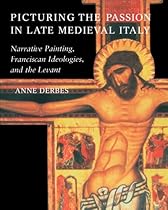Picturing the Passion in Late Medieval Italy: Narrative Painting, Franciscan Ideologies, and the Levant

| Author | : | |
| Rating | : | 4.84 (733 Votes) |
| Asin | : | 0521639263 |
| Format Type | : | paperback |
| Number of Pages | : | 290 Pages |
| Publish Date | : | 2015-12-03 |
| Language | : | English |
DESCRIPTION:
A great book on an important (for academics) subject Derbes has shown how it was that the artistic revolution of Giotto's time was built on Byzantine foundations revivified by the Franciscans (the standard rap is that Giotto turned away from the Byzantine and, once again, "looked at nature.") For those interested in the "transition" from "medieval" to "renaissance," this is a very important piece of writing and thinking. A Customer said our wonderful professor. reading this book was wonderful, but taking the italian renaissance class with our dear professor, Anne, was even better!!
This study examines the narrative paintings of the Passion of Christ created in Italy during the thirteenth century. Demonstrating the radical changes that occurred in the depiction of the Passion cycle during the Duecento, a period that has traditionally been dismissed as artistically stagnant, Anne Derbes analyzes the relationship between these new images and similar renderings found in Byzantine sources. She argues that the Franciscan order, which was active in the Levant by the 1230s, was largely responsible for introducing these images into Italy.
Unlike prior attempts to link Franciscan literature and imageryDerbes is extraordinarily well read and never forces her argument. Radke, Syracuse University"Among its strengths, which are many, is the way in which Derbes attempts to relate these changes to larger cultural and religious trends. Instead, she reveals and respects multiple strands in the historical record, emphasizing what she sees as particularly Franciscan but also exploring the general appeal of this new imagery for worshipers and patrons outside the order. She treats written text and visual imagery as mutually supportive, never assuming that art merely illustrates the written word or that words describe pictures, but that each contributes symbiotically to an era's self-definition." Gary M. The open format and well-placed illustrations make this iconographic analysis a pleasant read." Studies in Iconography . "Derbes's very densely written book is highly detailed in its
